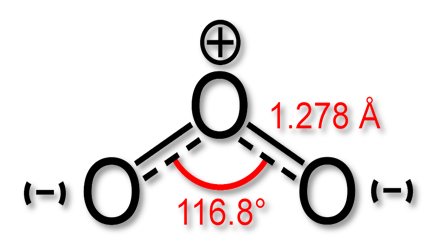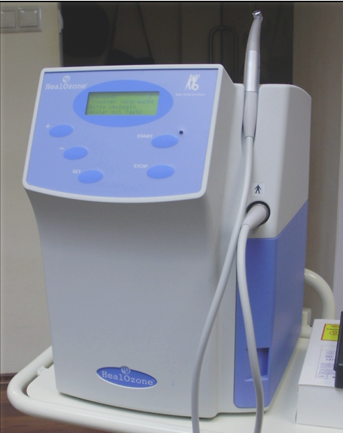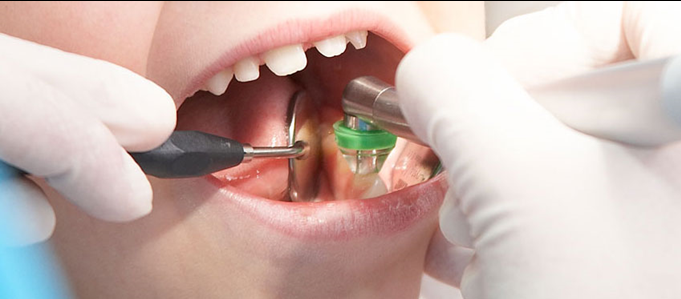Introduction
Conventional medicine or Allopathy is the first modality of treatment of every disease confronted till date, yet there are certain diseases which fail to respond effectively to these treatments. Thus, ‘Complementary therapy’ has been an adjunctive mode of treatment along with conventional medicine. Complementary therapy involves acupuncture, biofeedback, massage, herbal medicine, electromagnetic therapy, meditation, music therapy, aromatherapy and ozone therapy.1
Ozone (O3) therapy has shown encouraging results in the field of dentistry in relation to the management of carious lesions and biofilm disruption. The use of ozone therapy due to its antimicrobial properties in the treatment of periodontal diseases seemed to be a rational step due to its efficacious elimination of biofilm, simultaneously destroying the tenant microorganisms confronted in periodontal infections. The successful management of periodontal diseases using ozone has portrayed its potential as a complete treatment for periodontal diseases.2 Although ozone therapy has shown desirable prospects in certain diseases, its application is not completely risk free. The FDA recommends a maximum tolerable dose of ozone not exceeding 0.05 ppm. Hence, this review discusses the role of ozone therapy in the treatment of periodontal diseases.
Physical & chemical properties of ozone
O3 is a highly unstable trioxygen molecule with a ‘bent’ or ‘triangular’ configuration (Figure 1). The bond angle between the three oxygen atoms is 116.8 degrees, and the distance between the two terminal oxygen atoms is 1.278 Angstrom units (Ao). It is naturally present as a gas with a pale blue color and a pungent odor reminiscent of chlorine.3 O3 is thought to be one of the strongest oxidants known to human beings and is used in extremely low concentration. This oxidant property can degrade almost every organic or inorganic molecule it comes into contact with. It is believed to be a highly potent atmospheric pollutant formed from the reaction of sunlight with air containing hydrocarbons.3
Biological Properties
The biologic effects of ozone can be divided into 5 categories.
Antimicrobial Action
The gaseous or aqueous phase of O3 (0.1 ppm) facilitates the annihilation of cell walls and cytoplasmic membranes of bacteria and fungi, and attacks the glycoprotein, glycolipids and other amino acids, thus blocking the enzymatic control system of the cell leading to increased membrane permeability and functional termination.4 It also upsets viral capsids and destroys viral DNA, and it helps to obliterate budding cells in fungal species. It disrupts cariogenic bacteria, thus eliminating them, and also helps in buffering plaque fluid by decarboxylating pyruvic acid to acetic acid.5
Immunoregulatory effect
O3 stimulates the proliferation of immunocompetent cells, nuclear factor kappa-b and transforming growth factor beta (TGF-β), thus increasing cytokine release and helping in tissue remodeling as well as activating other immune processes. It upsurges the synthesis of interleukins, prostaglandins, interferons and TNF-α, which aid in inflammation and wound healing.6
Biosynthetic effect
Being a supersaturated molecule, O3 stimulates the O2 content of cells, thus refining the mitochondrial respiratory chain. It triggers the Kreb’s cycle and causes an increase in ATP and 2,3-diphosphoglycerate (2,3-DPG) in the cell. Another witnessed effect is erythroblastic differentiation (oxidative pre-conditioning), which increases the number of erythrocytes and conditions them against oxidative stress. O3 helps to produce free radical scavengers which assist in the removal of excessive free radicals that could damage healthy cells in the body.6
Antihypoxic effect
Ozone being an unstable molecule separates into a nutritional dioxygen and a free radical. The free radical helps in detoxification, and the dioxygen molecule improves oxygen availability for organ uptake resulting in increased respiratory and tidal volume. There is a therapeutic effect on erythrocytes by preventing cell rolling and aggregation, thus improving capillary blood flow and increased oxygen supply in inflamed tissues.6
Anti-inflammatory & Analgesic action
These effects seem to be due to its mode of action on diverse targets:
Reduced production of inflammatory mediators,
Oxidation of metabolic mediators of pain,
Improvement in oxygen supply to tissues that is essential for the elimination of toxins and resolution of the physiological disturbance that generates pain, and
Synthesis of biologically active substances like interleukins and leukotrienes, as well as prostaglandins which alleviate pain.7
Biologic threshold
The FDA has limited the use of ozone to a level of under 0.05 ppm emission from any instrument because of its hazardous effect. The Occupational Safety and Health Administration (OSHA) has also established a maximal permissible exposure limit of 0.1 ppm. 7
Advantages of ozone8
Disadvantages of ozone8
Forms of ozone
Various forms of ozone have been utilized in dentistry for a number of purposes:
Gaseous ozone
Used as a fumigating agent for disinfection of operatories and instruments. It has a high oxidation potential when used against bacteria, viruses, fungi and protozoa. 9
Ozonated water
Causes rapid inactivation of microorganisms by rupture of cell wall membrane of organisms associated with the lesion. Subgingival irrigation with this form enhances periodontal health and plays an important role in periodontal therapy by reducing gingival inflammation and inhibits attachment loss.10
Ozone Nanobubbles
Kaneo Chiba and Masoyoshi Takahashi (2005) ozonated nanobubbles (50 – 500 nm) and patented its production. These cause deeper perfusions due to their miniscule size, and their cavitation effect releases ozone and kinetic energy simultaneously disturbing biofilms and destroying micro-organisms. 10
Ozonated Oil
They are pure plant extracts, through which pure oxygen and ozone are passed. Sunflower ozonized oil has shown efficacy against Staphylococci, Streptococcus, Enterococci, Pseudomonas and Mycobacteria.10
Ozone delivery systems
Healozone (KaVO)- This can deliver both ozonated gas and water. It encompasses a console that has a vacuum unit, a handpiece and a silicone positioning cup (Figure 2). The special silicone cup is attached to an airotor handpiece which is located over the tooth (Figure 3). When air passes through the cup, it gets converted to ozone and is removed from the teeth by the console unit. The concentration of ozone is 2100 ppm in the cup adjacent to the tissues. This system has been shown to effectively reduce microbial counts. 11
Ozonytron (MyMed GmbH)- This portable ozone generator containing a mixture of noble gases is highly competent to conduct electromagnetic energy. A double glass camera forms the glass probe comprising a mixture of noble gases, which conduct and emit electromagnetic energy. The emitted energy when in contact with the body causes the splitting of environmental diatomic oxygen into singular atomic oxygen and ozone. Therefore, ozone could most likely be applied to inaccessible areas like gingival pockets or root canals, as there is no closed circuit here. 12
Prozone (W&H)- This consists of a console unit, handpiece, foot controls and specialized endodontic and periodontal tips. The console unit is a portable ozone generator that supplies a forced stream of ozonated water through the handpiece. There is also a vacuum unit which aspirates the ejected ozonated water from surrounding tissue. 13
Ozotop- It is a compact, easy-to-use tabletop unit having a free-flow ozone delivery system that could easily penetrate the root canals and periodontal pocket. Ambient air is filtered and dried before it is passed over a ceramic plate. Then high voltage is applied, producing ozone. Ozone therapy with a high volume suction is applied for 6, 12 or 24 seconds based on the treatment. Usually, this is about 21s for surgical disinfections and 18s for periodontal disinfection.13
Application of ozone therapy in dentistry
Reactive oxygen species that is produced from ozone fulfills the anticariogenic property. This characteristic feature is highly active in bacterial cell wall destruction. A reduction in the microbial count has been shown by the application of intracanal circulation of ozone gas, and thus is effective in treating periapical lesions.
Used for bleaching, decontamination of avulsed teeth prior to replantation, and augmenting the bonding of dental cements to the tooth surface.
To eliminate the smear layer, and to successfully pad the dentinal tubules dismissing root sensitivity.
Effective in treating individuals with herpes labialis, lichen planus and candida stomatitis, advanced head and neck tumors and mucositis secondary to chemotherapy/radiotherapy by producing an improved blood flow and oxygenation.
Used in the treatment of bisphosphonate-induced radionecrosis by its antioxidant property, resulting in detoxification and removal of the bony sequestrations.
Ozonated water is advantageous in reducing the number of C. albicans on denture bases. The oxidative effects of ozone aid in cleansing dentures and partial denture frameworks without compromising the physical properties of the prosthesis.
Helps to improve resinous bonding of orthodontic brackets, resulting in higher bond strengths and reduced rates of bracket debonding.
Applications of ozone in pediatric dentistry include caries management, root canal disinfection, wound healing after surgical treatment, treatment of oral ulcers, aphthae, temporomandibular joint dysfunctions and also tooth bleaching.14, 15
Ozone therapy in periodontology
Ozone has been a topic of discussion as a possible substitute to oral antiseptic agents owing to its antimicrobial property. Lately, both forms of Ozone (gaseous and aqueous) have revealed dose-dependent antimicrobial activity against certain oral pathogens correlated with caries or other dental infections. Ozone therapy has been used in the following periodontal procedures:
Scaling and Root Planing: Gaseous ozone in conjunction with scaling and root planing has exhibited better post-operative healing and healthy tissue when compared to the results obtained by treatment with Er:YAG laser. 16
Eliminating Periodontal Pathogens: Ozone therapy with 0.167 mg/min/l sterilizes contaminated water with up to 105 cfu/ml bacteria in 30 minutes. Ozonated water was thus found to be efficient in elimination of periodontal pathogens like Streptococcus mutans, Streptococcus oralis, Streptococcus sanguis, Lactobacillus acidophilus, Porphyromonas gingivalis, Porphyromonas endodontalis, Aggregatibacter actinomycetemcomitans and Candida albicans. Thus, ozonated water also demonstrates the ability to prevent plaque accumulation. 16
Cleansing Agent: Ozonated water has been effective in mechanical cleansing and root surface decontamination selectively without undesirably upsetting periodontal ligament cells, when applied on avulsed teeth with intact periodontal ligament tissue. 16
Pocket Depth Reduction: There was reduction in pocket depth, plaque index, gingival index and bacterial count when patients suffering from aggressive periodontitis were managed by a combination of scaling and root planing with ozone application. 16
Irrigant: Ozonated water was established to have less cytotoxic effects on biologic tissues rather than routinely used irrigants like 2% Chlorhexidine, 5.25% Sodium hypochlorite and 2.25% Hydrogen peroxide. Hence, depending on these results, ozonated water can be applied regularly as an irrigant in dental clinics during treatment and post-surgical follow-ups. 16
Wound Healing: Fillipi et al. (2001) observed that ozonized water had great impact on epithelial wound healing. They discovered that ozonized water applied regularly could hasten the healing response of oral mucosa (within first two postoperative days). O3 recuperates oxygen transportation in blood, thus changing cellular metabolism, that is, activation of aerobic phenomena. It increases the metabolism of inflamed tissues by enhancing their oxygenation and reducing total inflammatory processes. 16
Immune Regulatory Effect: The immune regulatory outcomes of ozone were attributed to the Nuclear Factor Kappa B system, that generally encompasses signaling and transcription during inflammation. The NFκb expression was found to be constrained due to ozone treatment, thus representing anti-inflammatory effect. In addition, reduced expression of prostaglandins and thromboxane A2 was observed, further leading to the anti-inflammatory effect. Hence, this effect could elucidate clearly the pain relief observed clinically when ozone was administered post-operatively following third molar surgery and in cases of acute necrotizing gingivitis. 16
Effect on Periodontal Health: The application of ozonated water enhanced the health of periodontal tissue, in cases of generalized chronic periodontitis. Subgingival irrigation was accomplished with the help of irrigants at different time intervals resulting in a greater reduction of scores in plaque index, gingival index and bleeding index when compared with chlorhexidine. There was also a reduction in Aggregatibacter actinomycetemcomitans counts by the 25th percentile in the ozone group. 16
Grafting: Ozone therapy was found to be beneficial to the efficacious amalgamation of soft tissue grafts for gingival augmentation cases. It was smeared on de-epithelialized gingival grafts in the donor area, and this led to faster healing responses in recipient sites. This occurs due to the increased oxygen perfusion and vasodilatory effect of Ozone. 16
Role in Bone Regeneration: In the current scenario, Ozone has been examined in cases requiring bone regeneration. Özdemir et al. (2013) conducted a study, according to which ozone, with autograft rendered a growth in the amount of osteoblast count and total bone area. 16
Tooth Brush Decontamination: This can be carried out with the help of ozone treatment. The application of Ozone has proven to be efficacious to remove the ‘toothbrush bristles microbiota’ following conservative brushing. 16
Role in Implant Dentistry: Ozone has specific properties including bactericidal, virucidal and fungicidal effect. This causes stimulation of the blood flow, thus making ozone therapy beneficial for decontamination. Ozone has a strong oxidation effect on biological macromolecules, predominantly poly-unsaturated fatty acids and –SH groups, thus upsetting membranes and proteins. Thus, it has been well documented that Ozone could possibly be used as a therapeutic agent for inflammatory diseases like periimplantitis. Ozone has portrayed medical proficiency in implant surface debridement, thus causing successful resolution of peri-implantitis. Ozonated water has been used as an irrigant following coverage of exposed implant surfaces with graft material, which has resulted in successful integration. 16
Biologic Hazards
Some of the side effects of ozone therapy are epiphora, upper respiratory tract irritation, rhinitis, cough, headache, occasional nausea and vomiting; however, these are infrequent occurrences. There appears to be pulmonary embolism that occurs due to long-term or higher concentration exposure to ozone. This leads to dyspnoea, wheezing, severe expectoration, aggravation of bronchitis or asthma and could also cause chronic obstructive pulmonary disease (COPD).
In serious cases of ozone intoxication, the patient must be placed in the supine position, humidified oxygen given and supplements of ascorbic acid, vitamin E and N-acetylcysteine administered. In order to enable a good treatment facility through ozone therapy, the delivery devices should be FDA-approved, and Air Quality Index measurements should be monitored at regular intervals in order to maintain ozone concentrations within the stipulated limits.17
Contraindications of ozone therapy17
Conclusion
Dentistry has evolved with the introduction of modern new age science and technology to provide adequate and proper treatment to the patients. The effective antimicrobial power of ozone, and the capability to improve the circulatory system and modify the immune response, makes it a therapeutic agent of choice for treating medical pathologies and infectious oral diseases. Ozone therapy reduces the treatment time and eliminates the bacterial count more explicitly. This treatment is painless and upsurges the patient’s acceptability and completion with minimal side effects. Scientific researchers and authors have suggested that this therapy has abundant potential in treatment of numerous dental problems and also helps to incapacitate viruses, fungi and bacteria. However, further research work is mandatory to standardize and validate such indications.
It is, however, unfortunate that most ozone therapists have either a misjudgment or limited knowledge for performing ozone therapy. This setback, correlated with the problems, has hampered real progress in the study of the concerned subject. Ozone therapy remains a barely known and debated corresponding practice in dentistry. This situation has generated a sort of campaign against ozone therapy despite the fact that ozone is thought to be one of the finest disinfectants capable of preventing infection outbreak.



